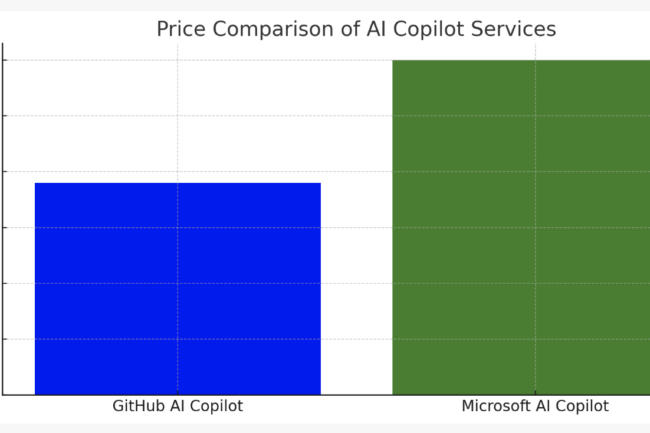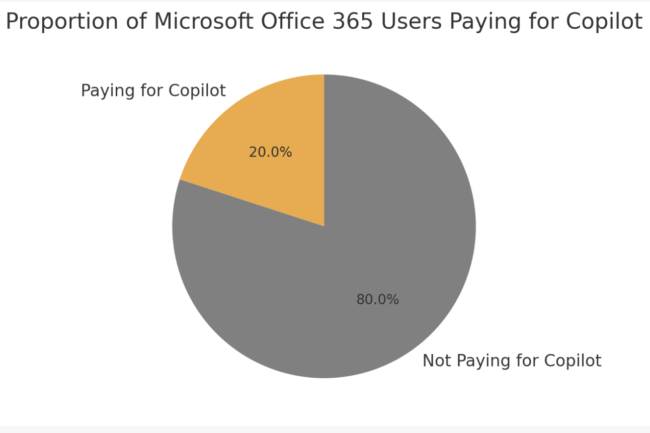Used a lyric from the National to drive images – – The top two, 3 months ago with Dall-e, the bottom two July 31, st 2023 from Stability’s new engine.
You in my New Order t-shirtHoldin’ a cat and a glass of beer

Used a lyric from the National to drive images – – The top two, 3 months ago with Dall-e, the bottom two July 31, st 2023 from Stability’s new engine.
You in my New Order t-shirtHoldin’ a cat and a glass of beer

If you are running an AI service, whether large or small, one must address the nexus of the high compute costs and the expensive nature of providing such offerings. Companies like Microsoft and GitHub have responded to this challenge by introducing AI Copilot services at various price points, catering to consumer demand. The key question is whether consumers perceive AI as a mere productivity enhancement or an essential service.
Potential Revenue Growth and Pricing Model: Successfully portraying AI as indispensable opens the door to significant revenue growth. However, the current pricing model, relying on recurring revenue from flat-rate fees, may require reevaluation as adoption rates rise.
Indispensable Features of AI Services: To be considered indispensable, AI services must deliver the following key aspects:
 Assuming the AI services can deliver the indispensable features outlined above, the industry is not there yet. A shift towards a per-usage payment model could become necessary to manage compute costs and maintain profitability.
Assuming the AI services can deliver the indispensable features outlined above, the industry is not there yet. A shift towards a per-usage payment model could become necessary to manage compute costs and maintain profitability.
Long-term success in the AI market will depend on striking the right balance between pricing, consumer perception, and service delivery.

Companies need to address the challenges posed by high compute costs while convincing consumers of AI’s essential role beyond mere productivity enhancement. Establishing AI services as indispensable is the challenge , the win = significant revenue growth.
In another timeline we would guide to an upcoming media m&a landscape.
That implies demand. If what Iger, Redstone and others are saying now
come to manifest there will be a lot of networks up for grabs with few suitors.
Couple that with a crippling actor and writer strike and you have the equivalent
of thousand year storm in broadcast and cable.
The landscape starts to look like a fire sale. I did a rough projection just looking
at a few stakeholders and being conservative….

In another lifetime, I edited video on 3/4 inch media on Sony RM-440 editing machines. If we wanted something like this prompt generates we had to do a table top shoot that had manual physical panning and tilting. The next step would be the editing – this took hours if not days. Here we have it in a paragraph of text.
I have a high-resolution panoramic image that I’d like to convert into a video. The video should have a 3:2 aspect ratio and the image should fill the entire video, even if some of the sides are cut off. The video should start at the center of the image, pan smoothly to the right until it reaches the edge, then return to the center. From there, it should pan smoothly to the left until it reaches the other edge, and then return to the center again. The video should be created using the imageio library in Python, saving the frames directly to a video file instead of storing them in a list. The frame step should be 8 pixels. If necessary, the edges of the image can be cropped so that the size of the image is divisible by the frame step. Please find the image attached image.
META’s take on Twitter
Meta has a long history of mimicking products and product features of competitors.
Most if not all of the efforts have been met with meh. Will this time be different?
We are in a brief moment of time between the products announcement and its debut.
What are the expectations? There are some clear wins that could help insure success.
Open Letter from Security and Privacy Researchers in relation to the Online Safety Bill
The economic potential of generative AI: The next productivity frontier
Stability AI CEO Emad Mostaque, in an interview with Peter H. Diamandis for the Moonshots and Mindsets Podcast, said that in the next five years, there will be no human programmers. He also said that by the end of next year (2024), ChatGPT will be available on phones and won’t require an internet connection to run. The CEO also highlighted how AI is growing at a rapid pace.
Google the AI scraping game is on publicly accessible sources For example, we may collect information that’s publicly available online or from other public sources to help train Google’s languageAI models and build products and features like Google Translate, Bard, and Cloud AI capabilities. Or, if your business’s information appears on a website, we may index and display it on Google services.
Open-source “Davids” are taking on GPT-4 and other Goliaths Open-source LLMs are a possible antidote to Microsoft and Google’s control of chatbots like GPT-4
We’re starting to see the first open-source *video* generation models
Links from today…
Voice actors are discovering that decades-old contracts have given companies the right to use their voices to train AI models that compete with them
Platform-agnostic AI models. Inflection AI just got $1.3 billion from Microsoft, Nvidia, Bill Gates, and other investors
Segment Anything Meets Point Tracking
https://github.com/SysCV/sam-pt
https://arxiv.org/abs/2307.01197
AI and the automation of work [ben evans]
Uncensored Chatbots Provoke a Fracas Over Free Speech [nyt]
Accurately predicting hit songs using neurophysiology and machine learning
MusicGen is state-of-the-art model for music generation by Meta AI
MusicGen in 🤗 Transformers
https://github.com/Stability-AI/generative-models/blob/main/assets/sdxl_report.pdf
